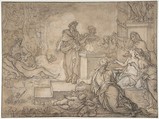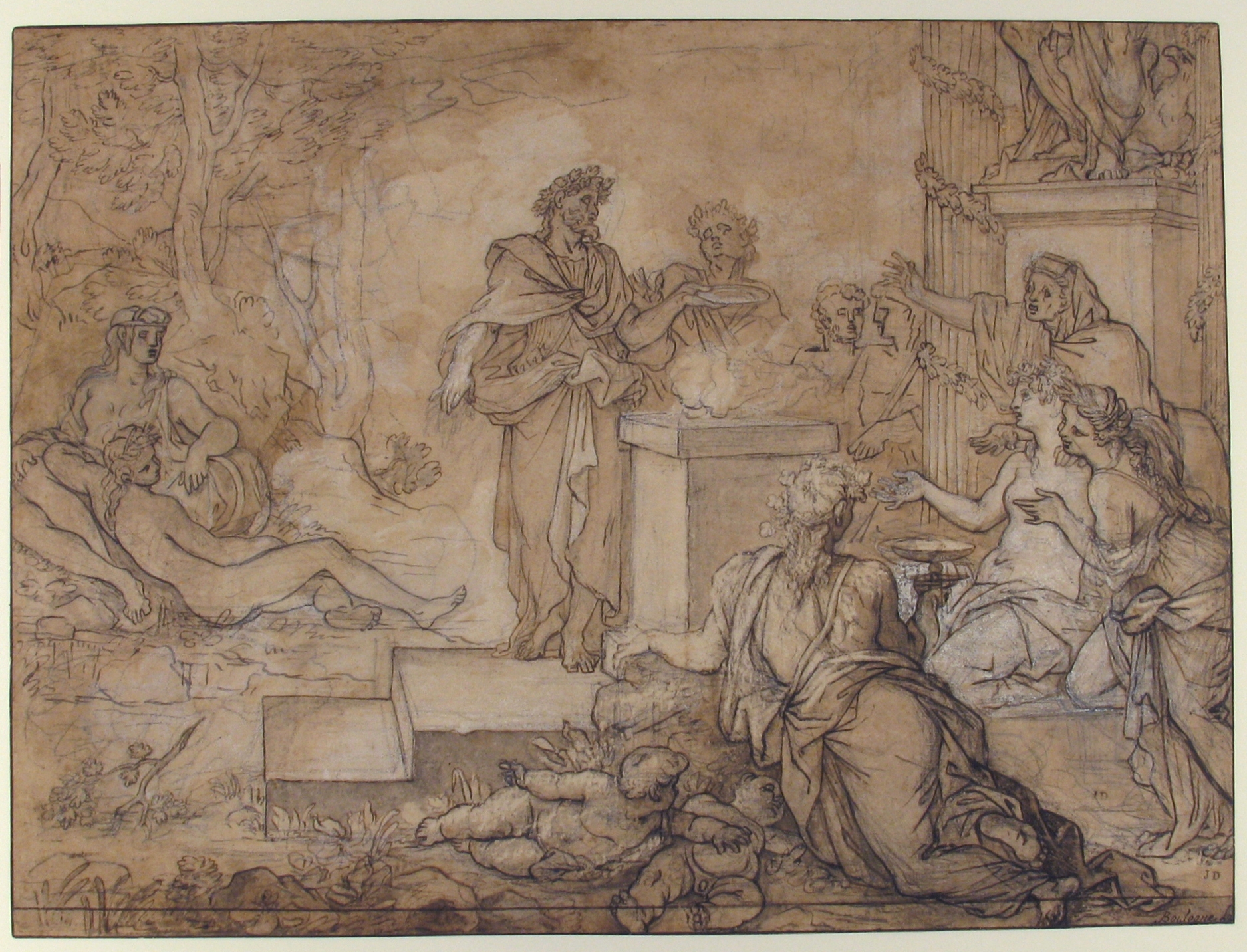Sacrifice Offered before a Statue of Jupiter
Louis de Boullogne the Elder French
Not on view
Louis de Boullogne The Elder (French, Paris 1609-1674 Paris) travelled to Rome in 1631 where he stayed until 1637. There, he studied with Sebastien Bourdon, a painter whose influence can be felt in Boullogne’s work. In 1648, Boullogne was one of the twelve founding members of the Académie Royale de Peinture et de Sculpture, where he would attain the position of Professor in 1656.
In this vigorous drawing, the artist used a strong ink line to emphasize the elegant contours of the figures, which he then heightened with thinned white gouache. The translucent white washes allow the free black chalk underdrawing to show through, adding to the appeal of the sheet. Figures draped and coiffed in a Roman style are arranged in a sober antique architectural setting, indicated only by two steps, a sacrificial altar, and two fluted columns. A statue of Jupiter, cropped at the knees, but recognizable by his attribute of the eagle, presides over the scene. A priest performs a libation at the altar while a range of spectators look on. Throughout, the treatment of the faces is idiosyncratic, with angular, expressive features.
The drawing, which has not been connected with a painting, appears to have been trimmed along the right and left margins. A horizontal ink link parallel to the bottom margin may indicate that the artist expanded the composition at some point. The addition of an irregular piece of paper affixed over the upper half of the seated woman at the far left suggest changes were also made to that figure. An attribution to Bon Boullogne (French, 1649-1717) has also been suggested by François Marandet.
Due to rights restrictions, this image cannot be enlarged, viewed at full screen, or downloaded.
This artwork is meant to be viewed from right to left. Scroll left to view more.






